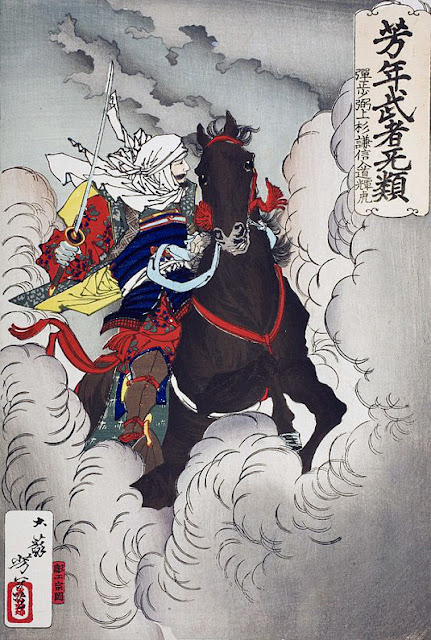 |
| Toyoharu: Act VII (Shichidanme) |
Utagawa Toyoharu (1735?-1814) founded the later so successful Utagawa school. Among its many members, were, for instance, Hiroshige, Kunisada and Kuniyoshi.
A print using perspective to create a sense of depth is called uki-e. Toyoharu was the first to apply perspective in nishiki-e (full colour print). Here we see one example of his uki-e: Act VII (Shichidanme), from the series Perspective Pictures of the Storehouse of Loyal Retainers (Uki-e Kanadehon Chûshingura).





